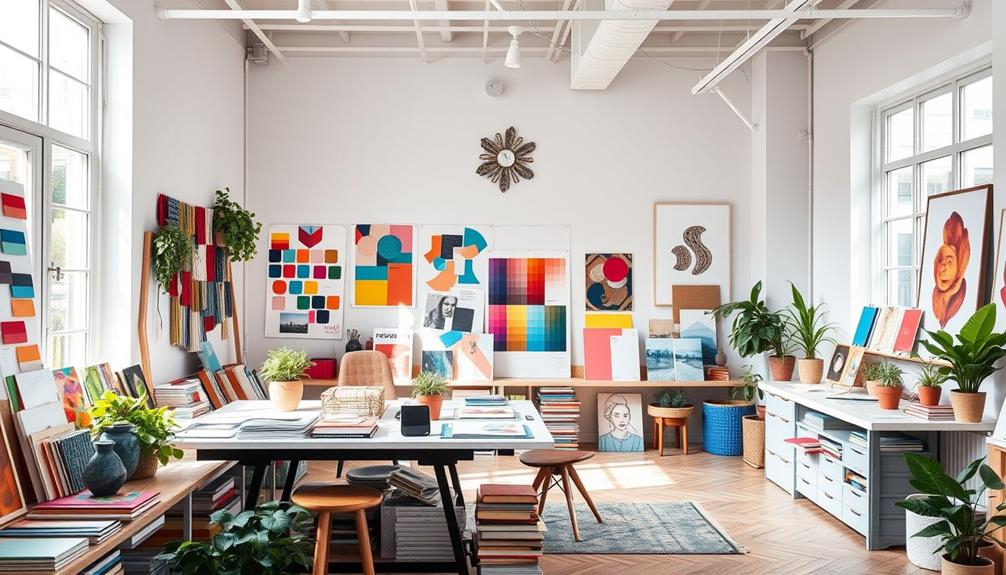To get started in interior design, first, assess your motivations and career goals. Identify your strengths and interests, whether you prefer residential or commercial design. Next, choose an accredited educational program that suits your aspirations, focusing on design theory and software skills. Build a portfolio showcasing your work through internships, volunteer projects, or personal redesigns. Gain practical experience by connecting with established designers or participating in events. Finally, stay updated on industry trends and continue refining your personal style. As you explore this exciting field, you'll discover countless opportunities to grow and express your creativity. When starting your interior design career, it’s important to be open to learning and adapting to new techniques and trends. Networking with industry professionals and joining professional organizations can provide valuable connections and resources. By staying informed about the latest technology and design trends, you can position yourself for success in the competitive world of interior design. Utilizing these interior design career tips can help you navigate the industry and achieve your career goals.
Key Takeaways
- Assess your motivation and career goals to determine your focus within interior design, such as residential or commercial projects.
- Choose an accredited educational program to gain essential skills and prepare for certification exams like the NCIDQ.
- Build a diverse design portfolio showcasing your projects, including internships and personal redesigns, to demonstrate your skills.
- Gain practical experience through internships, volunteering, or offering design services to friends and family.
- Network with industry professionals by attending events and joining associations to enhance connections and discover opportunities.
Assess Your Motivation
When exploring a career in interior design, it's vital to regularly assess your motivation. Start by reflecting on your personal interests and passions in the field. What aspects excite you?
Whether it's color theory, space planning, or sustainable design practices, identifying these elements can help guide your path.
Next, think about your skills and strengths. Are you creative, organized, and a good communicator? These traits are fundamental for success in an interior design career.
It's also important to differentiate between wanting to be an interior designer and a decorator, as the latter often has fewer formal educational requirements.
Consider your long-term career goals. Do you envision yourself working in residential spaces, commercial projects, or specialized sectors like healthcare or education?
Your direction will influence the educational requirements you need to meet.
Choose Your Educational Path

When you choose your educational path in interior design, consider your degree options carefully, as they can shape your career.
It's important to select an accredited program, since this guarantees you're getting quality education and can meet certification requirements.
Additionally, focus on coursework that covers essential topics like design theory and software skills, as these will be critical in your future work.
Degree Options Available
Choosing the right educational path in interior design is important for your success in the field. You have several options depending on your career goals.
A Bachelor's degree in interior design typically requires four years of study, covering significant topics like design theory, color theory, and CAD software training. This degree equips you with the extensive skills needed for advanced positions.
If you're looking for a quicker entry into the field, consider an Associate's degree in interior design, which takes about two years to complete. This foundational credential prepares you for entry-level positions and can be a stepping stone towards a more advanced degree.
You might also explore certificate programs that focus on interior decorating. These programs can enhance your skills without the commitment of a full degree.
However, make sure the interior design programs you consider are accredited by the Council for Interior Design Accreditation (CIDA). Accreditation is essential, as it guarantees the program meets industry standards and boosts your job prospects.
Additionally, many programs incorporate internships to fulfill work experience requirements, giving you hands-on practice and valuable networking opportunities.
Choosing the right educational path sets the stage for a successful career in interior design.
Accreditation Importance
Confirming that your interior design program is accredited by the Council for Interior Design Accreditation (CIDA) is vital for your educational journey. Accreditation guarantees that the program meets industry standards and provides you with a quality education.
When you pursue an interior design degree, whether it's a four-year Bachelor's or a two-year Associate's, make sure it's from an accredited institution. This not only lays a strong foundation in significant subjects like design theory and CAD but also opens doors to professional opportunities after graduation.
To become certified and licensed in many states, you'll need to pass the National Council for Interior Design Qualification (NCIDQ) exam. This exam requires a degree from an accredited program and relevant work experience.
By choosing an accredited program, you're setting yourself up for success and confirming that you have the necessary knowledge and skills to pass the NCIDQ.
Additionally, consider engaging in continuous education and obtaining specialized certifications, such as LEED, to further enhance your qualifications. Staying updated on industry trends and regulations won't only keep you competitive but also confirm that you're providing the best services to your future clients.
Coursework Essentials
To commence your interior design journey, selecting the right coursework is indispensable. An accredited degree is your foundation, with a Bachelor's typically requiring four years and an Associate's about two. Your coursework should cover interior design principles, color theory, drawing, and CAD (Computer-Aided Design), equipping you with the skills needed for a successful career.
Hands-on experience is essential, so look for programs that offer internships. These opportunities not only enhance your practical skills but also help you build a professional network and improve job placement post-graduation.
Make certain your program is accredited by the Council for Interior Design Accreditation (CIDA) to guarantee you're learning industry standards.
Once you complete your studies, consider pursuing interior design certification, like the National Council for Interior Design Qualification (NCIDQ) exam. This certification can greatly enhance your job prospects and boost your professional credibility.
Understand Certification Requirements

To succeed in interior design, you need to understand the certification requirements, which can vary by state.
Preparing for the certification exam is essential, so make certain you gather the right resources and study effectively.
Additionally, familiarize yourself with local regulations to guarantee you meet all necessary licensing standards.
Licensing Variations by State
Licensing requirements for interior designers can vary widely across the United States, making it vital for you to understand the specific regulations in your state. Some states require specific licenses to practice, while others don't mandate any licensing at all.
In many cases, you'll need to pass the National Council for Interior Design Qualification (NCIDQ) exam, which requires you to meet certain education and work experience prerequisites.
In states like California, Florida, and New York, the licensing requirements are more stringent, guaranteeing that interior designers meet high standards. Conversely, states such as Texas offer different licensing options based on the level of practice, providing some flexibility.
You should also be aware of title acts in certain states that uphold standards in education and experience; these may allow you to work as a decorator without formal certification.
To navigate your career effectively, it's imperative to thoroughly research local regulations and certification requirements specific to your state. This knowledge won't only promote compliance but also enhance your career prospects as an interior designer.
Certification Exam Preparation Tips
Preparing for the NCIDQ exam requires a clear understanding of the certification requirements and a strategic approach to your study plan. To qualify, you need an accredited degree in interior design and at least two years of relevant work experience. Familiarize yourself with the exam's three parts: IDFX, IDPX, and the Practicum. Each section tests different competencies essential for professional practice.
Start your exam preparation by reviewing the content outline provided by NCIDQ. This will help you grasp the specific topics and skills you need to master, including design theories and building systems.
Consider joining study groups or workshops designed specifically for the NCIDQ exam. These resources can offer valuable insights and allow you to share study materials with fellow candidates.
Don't forget to practice regularly with sample questions and practice exams available on the NCIDQ website. This will help you get comfortable with the exam format and timing, boosting your confidence on test day.
Build Your Design Portfolio
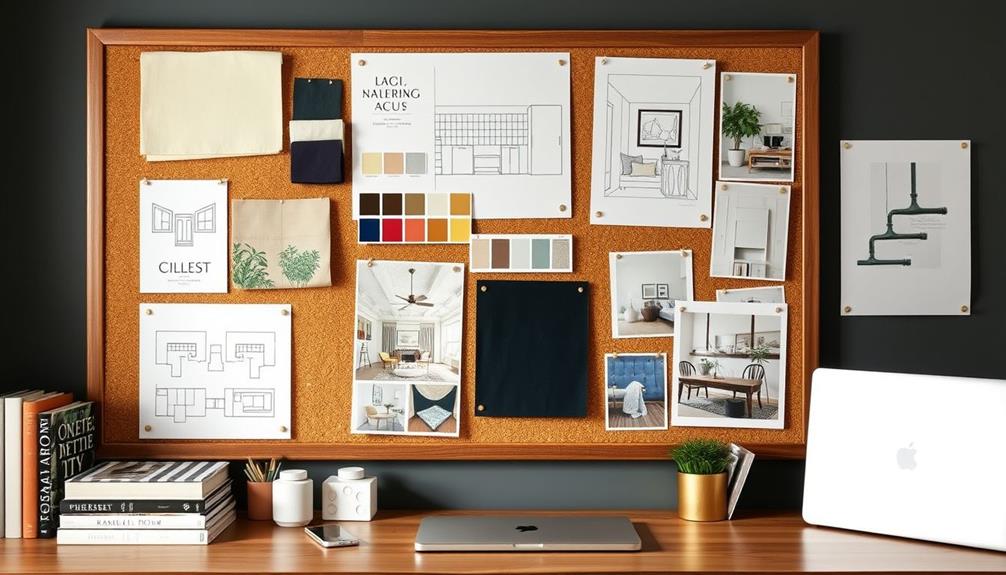
How can you effectively showcase your design skills and creativity? Start by building a strong design portfolio that includes a variety of projects. Incorporate personal redesigns, volunteer work, and internships to highlight your diverse skills.
Make sure to document your work with high-quality photographs, using before-and-after images to clearly demonstrate the impact of your design choices.
Utilizing digital platforms can enhance accessibility, allowing potential clients and employers to view your projects from anywhere. This approach not only makes your portfolio more attractive but also keeps it organized.
Regularly update your design portfolio with new projects and skills you've acquired, ensuring it reflects current trends and your personal growth in the field.
Don't hesitate to seek feedback from industry professionals on your portfolio. Their insights can greatly enhance its quality and help you communicate your design vision and capabilities more effectively.
Gain Practical Experience
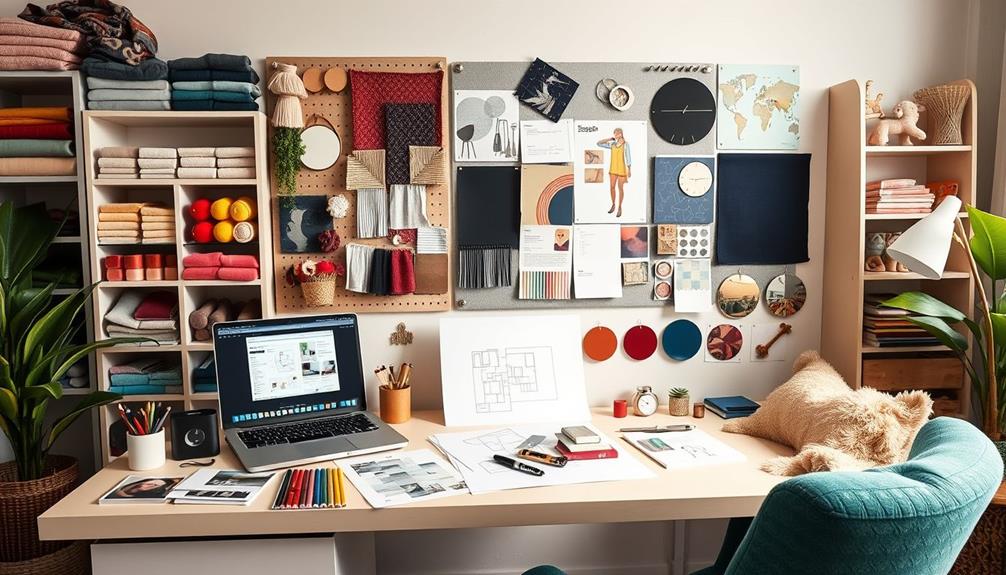
Once you've built a solid design portfolio, gaining practical experience becomes the next step in your interior design journey. Seeking internships or apprenticeships with established interior design firms is essential, as these opportunities provide invaluable hands-on experience and exposure to industry practices.
You can also explore an extensive suite of professional services offered by various firms to understand the diverse aspects of design. You'll not only learn the ropes but also make connections that can benefit your career.
Volunteering for local design projects or nonprofits is another fantastic way to gain practical experience while giving back to your community. This not only helps you build your resume but also enriches your design portfolio with real-world projects.
You might also consider offering your design services to friends or family for their personal spaces. This gives you the chance to practice your skills and create portfolio pieces that showcase your unique style.
Participating in community design events or competitions can also help you gain visibility and display your creativity to potential clients and employers.
Finally, shadow experienced designers to observe their processes. This will provide insights into client management, project execution, and design decision-making, all of which are vital for your development in the field.
For more insights on design approaches, consider exploring resources and insights.
Network With Industry Professionals

To kickstart your career in interior design, networking is essential.
Attend design events and join professional associations like ASID or IIDA to connect with industry leaders and gain insights.
Don't forget to utilize social media platforms like LinkedIn to expand your reach and discover new opportunities.
Attend Design Events
Exploring the world of interior design can be intimidating, but attending design events is a fantastic way to connect with industry professionals and gain valuable insights. These gatherings, like trade shows and conferences, are perfect for understanding current industry trends and discovering innovative products.
| Type of Event | Benefits | Tips for Success |
|---|---|---|
| Trade Shows | Discover new products | Prepare questions |
| Conferences | Learn from experts | Network during breaks |
| Local Meetups | Build connections with peers | Be approachable and engaged |
Networking events are essential for aspiring designers like you. They not only allow you to meet established design professionals but also to share experiences and ideas with your peers. Participating in local chapters of professional organizations can open doors to exclusive workshops and mentorship opportunities.
Additionally, volunteering at these events can enhance your visibility in the industry, helping you to build connections while contributing to meaningful causes. So, immerse yourself, embrace the experience, and don't be afraid to put yourself out there!
Join Professional Associations
Attending design events is a great way to meet industry professionals, but joining professional associations takes your networking to the next level. By becoming a member of organizations like the American Society of Interior Designers (ASID) or the International Interior Design Association (IIDA), you gain access to invaluable resources and networking opportunities that can propel your career forward.
These associations provide continuing education programs and workshops, often at reduced rates for members, keeping you updated on the latest design trends and technologies.
Networking events organized by these groups allow you to connect with established designers, fostering mentorship that can lead to job opportunities.
Additionally, many associations offer certification programs that enhance your credibility and demonstrate your commitment to professional development in the field.
Engaging with local chapters not only expands your network but also deepens your understanding of regional design needs and market trends.
Utilize Social Media
While it might seem intimidating at first, utilizing social media effectively can greatly enhance your presence in the interior design industry. Platforms like Instagram and Pinterest are perfect for showcasing your design projects, as the visual nature of these sites attracts potential clients and facilitates networking with industry professionals.
Joining LinkedIn groups related to interior design can also help you connect with fellow professionals, share insights, and stay updated on the latest trends and job opportunities.
Don't forget to participate in design-related hashtags like #InteriorDesign or #DesignInspiration; this will boost your visibility and engage you with a wider audience in the design community.
Additionally, attend virtual design workshops and webinars advertised on social media. These often provide valuable networking opportunities and can lead to discussions with established experts in the field.
Stay Updated on Trends
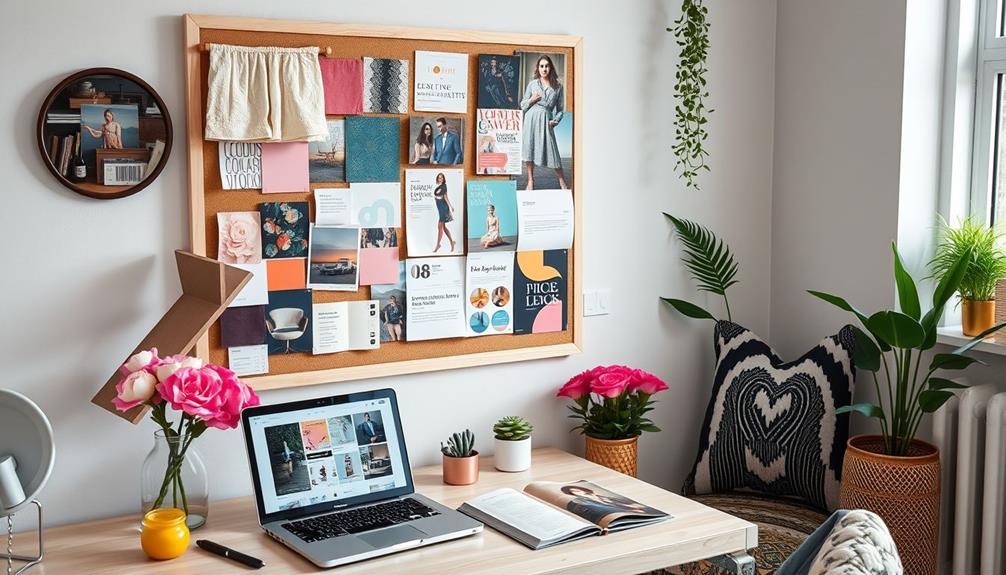
To thrive in the ever-evolving field of interior design, staying updated on the latest trends is essential. Subscribe to industry publications and blogs, like "Interior Design" magazine and "Dwell," to keep yourself informed about design trends, technologies, and innovations.
These resources often highlight emerging trends that can inspire your work, such as modern farmhouse bedrooms that emphasize cozy textiles and serene atmospheres.
Follow influential interior designers and design brands on social media platforms such as Instagram and Pinterest. This engagement offers valuable insights into current styles and helps you visualize how trends can be applied in real life.
Attending workshops, seminars, and webinars hosted by professional organizations like ASID and IIDA not only enhances your knowledge but also allows you to network with fellow industry professionals.
Participate in design expos and trade shows, such as the High Point Market, to discover new products and trends while connecting with manufacturers.
Lastly, join online design communities and forums where you can discuss trends, share ideas, and exchange feedback.
These interactions guarantee you stay updated, fostering a continuous flow of fresh perspectives that can elevate your design practice.
Develop Your Personal Style
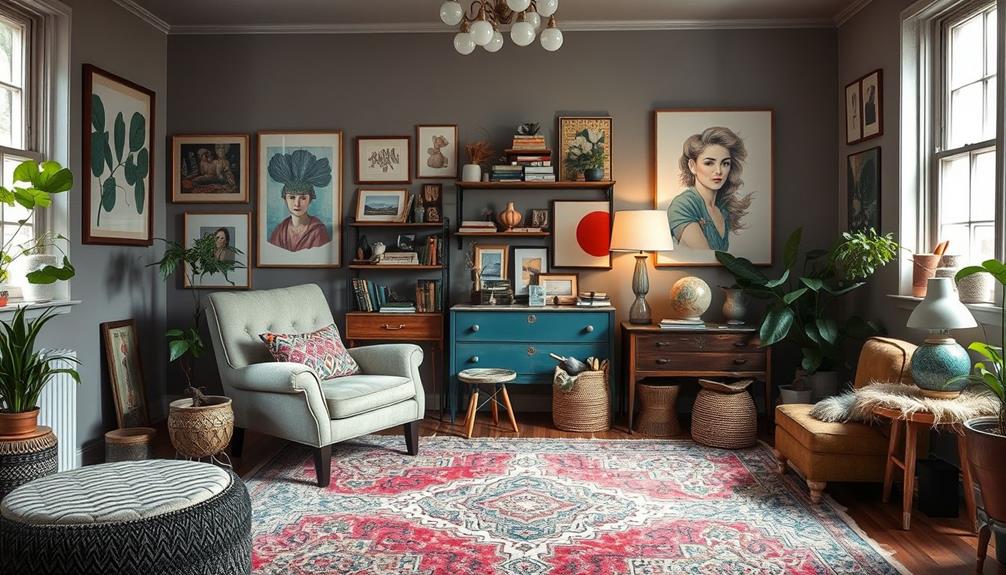
Developing your personal style in interior design is a journey of exploration and self-discovery. To start, experiment with various design aesthetics, like modern, traditional, or eclectic, to see what resonates with you. Keeping a visual diary or mood board will help you capture inspirations, color palettes, and textures that appeal to you, guiding your unique design choices.
Analyze your favorite designs to identify common elements such as color schemes, furniture styles, and patterns. This reflection will help you define your signature style. Regularly update your portfolio with projects that showcase your evolving design style, which is essential for attracting clients who appreciate your aesthetic.
Engage in design-related activities, like workshops or following influential designers on social media, to gain insights into emerging trends. This can further refine your personal style and keep you connected to the broader design community.
| Design Aesthetic | Elements to Explore | Resources |
|---|---|---|
| Modern | Minimalism, Clean Lines | Pinterest, Instagram |
| Traditional | Classic Furniture, Rich Colors | Design Books, Magazines |
| Eclectic | Mixed Patterns, Unique Finds | Local Markets, Online Stores |
Explore Job Opportunities
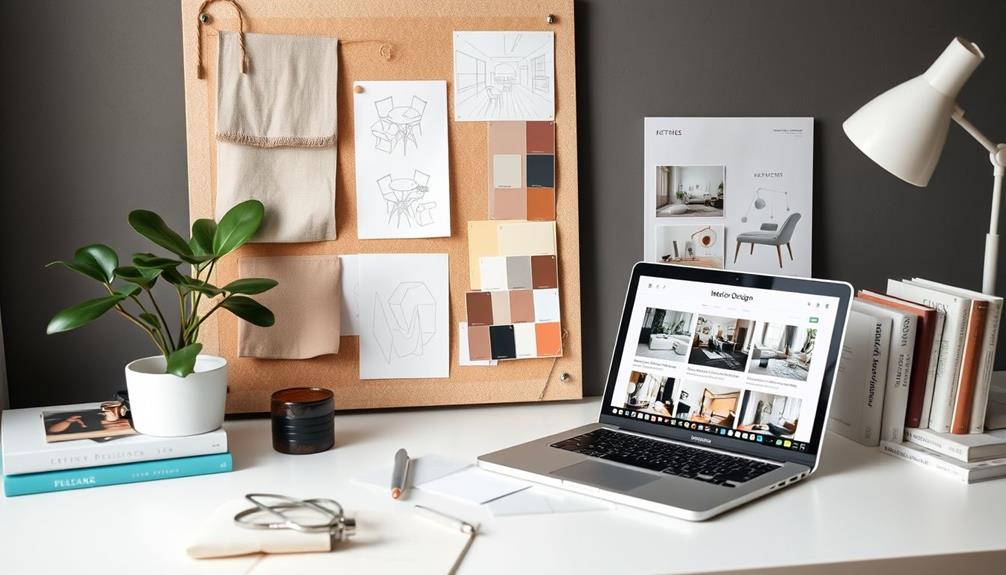
Exploring job opportunities in interior design can feel overwhelming, but starting with entry-level positions like Interior Design Assistant or Junior Designer can set you on the right path.
These roles provide essential hands-on experience and training, allowing you to build your interior design portfolio while working alongside seasoned professionals.
Utilize job boards specific to the design industry, like InteriorDesignJobs.com, to find relevant openings that match your qualifications.
Don't forget the power of networking; attend industry events, join professional organizations like ASID or IIDA, and connect with peers on platforms like LinkedIn. This can help you uncover hidden job opportunities that may not be advertised.
Consider internships with established design firms as well. They not only enhance your resume but also help you build valuable connections within the industry.
While applying, research company cultures and values to guarantee a good fit. This increases the likelihood of long-term job satisfaction and career growth in interior design.
Commit to Lifelong Learning

Building a successful career in interior design doesn't stop with landing a job; it also involves a commitment to lifelong learning. To stay competitive, you'll need to prioritize continuing education. Many professionals are required to accumulate Continuing Education Units (CEUs), where one CEU equals 10 contact hours of organized educational experiences.
Engaging in industry seminars, webinars, and workshops is essential for staying updated on design trends, materials, and technologies that contribute to your professional growth.
Consider enrolling in online courses or design boot camps to enhance your foundational skills and learn new techniques that align with contemporary practices. Networking with industry peers and participating in professional organizations like IIDA or ASID can provide invaluable resources, mentorship, and ongoing learning opportunities.
Additionally, regularly seeking feedback from peers can refine your design skills and keep your portfolio in line with current industry standards and client expectations.
Conclusion
As you commence your journey in interior design, think of yourself as an artist, ready to paint vibrant spaces with your unique vision. Embrace every lesson learned and every challenge faced, for each step is a brushstroke on the canvas of your career. Stay curious and let your passion be the compass guiding you through trends and styles. With dedication, you'll transform not just rooms, but lives—creating havens that reflect the beauty of those who inhabit them.
